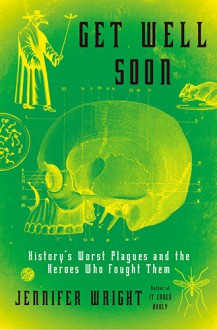I needed a couple plague free days but then I read three in a row to catch up and now my mind is drowning in sores and poop.
Syphilis
“Let’s bring back syphilis because it makes people more creative."
This was an interesting chapter, how the syphilis epidemic mirrored the AIDs, with not wanting to talk about it, the condemnation of people who got it, and how pushing it the corners made it even more virulent. I liked how the author called out some historical figures (Abraham Lincoln!) for more than likely having it.
15 to 30 percent of people who don’t receive treatment, syphilis advances to the positively terrifying tertiary stage. Symptoms can include joint problems and serious headaches. Sufferers’irises can become inflamed, leading to vision problems and sometimes blindness. Others might experience tremors and seizures. Some can become partially paralyzed. Many also develop a condition called tabes dorsalis, which causes intense, shooting pain throughout the body as the nerves along the spinal cords degenerate. Neurosyphilis, when the disease invades the nervous system, can occur at any stage, though it’s most often associated with tertiary syphilis. It involves an inflammatory response in the brain that leads to the destruction of bundles of nerve fibers. In some cases, the symptoms of neurosyphilis are mild, like headaches. However, many patients experience mental problems, like bouts of mania, changes in personality, and severe dementia.
I thought the author did a better job of discussing the symptoms and giving us a better idea of what happens to the body and mind. I thought it was also interesting how she touched on the "suffering artist" thinking, the best creations come out of pain, kind of how some artists think drugs and alcohol are needed to reach their potential today.
Some of the wild cures were discussed, dangerously raising body temperature, arsenic, and malaria and what really works, penicillin, such the miracle drug.
One of the interesting tidbits of this section was the Tuskegee Syphilis Study, a highly unethical study that I had vaguely heard about and seeing mentioned again, sent me off reading more about it.
Tuberculosis
The disease is still around, it’s still contagious, and despite the fact that the vaccine costs approximately sixteen cents to produce, and $3.13 to buy, tuberculosis continues to ravage periphery countries. Millions of people worldwide die from tuberculosis every year—and it’s totally treatable.
This one was a little tough to read about because of how it still has a strong presence today. The romanticizing mentioned was incredibly sad, thinking about how women tried to unhealthily copy the look of suffers because the look was thought to be beautifully tragic. Women always pushed to conform to impossible beauty standards.
It is very contagious. The bacterium is spread by droplets whenever sufferers cough or sneeze (or sing or laugh, for that matter). Those droplets are then inhaled by others. In some people, the bacterium remains latent for years.
Again, probably because it is a more modern disease, the author gave us more information the what and how. Highly contagious diseases like this seem so tragic to me because of people not knowing yet how it spreads and how they were sacrificial lambs for me.
Between 1829 and 1845, 10 to 13 percent of white prisoners in large cities on the East Coast of the United States died of tuberculosis; the rate was even higher among black prisoners.
Indeed, about 4 million people were thought to have died from consumption in England and Wales alone between 1851 and 1910.
Not quite the Bubonic Plague or Small pox but still having an impact and the fact that people still die of it today when there is the Bacille Calmette-Guérin vaccine, angers me and makes me feel grateful I was born where I was.
Cholera
It is spread through ingesting other people’s infected defecated matter.
As an old Oregon Trail enthusiast, I know all about cholera and its devastating effects. Clean water, clean water, clean water. Again, forever grateful for being born where I was. Available clean water is something I don't even think about or have to question.
Once you have drunk it without even knowing it, the cholera bacterium settles in the small intestine. There, it begins reproducing and forms a toxin called CTX, which covers the walls of the small intestines. Now, the main purpose of the small intestine is to keep you hydrated; it absorbs water and then sends it on to other areas of the body. However, when its walls are coated with cholera bacteria, it instead begins expelling water. The result is a white-flaked, watery diarrhea that is referred to as “rice stool.”
Not fun to read about and god awful to live I imagine. This is one that can boggle the mind because, of course, you need clean water but I only know that because of the work of John Snow (I'm a GOT watcher, so this name was wild). Going by the rest of the format of the book, I thought it was interesting how much the author focused on Snow, it seemed a little off how she kind of laid into his lifestyle but I guess it works for us to get to "know" him. If one thing can be said about this author, it's that she is not afraid to color her writing with her opinions.




































